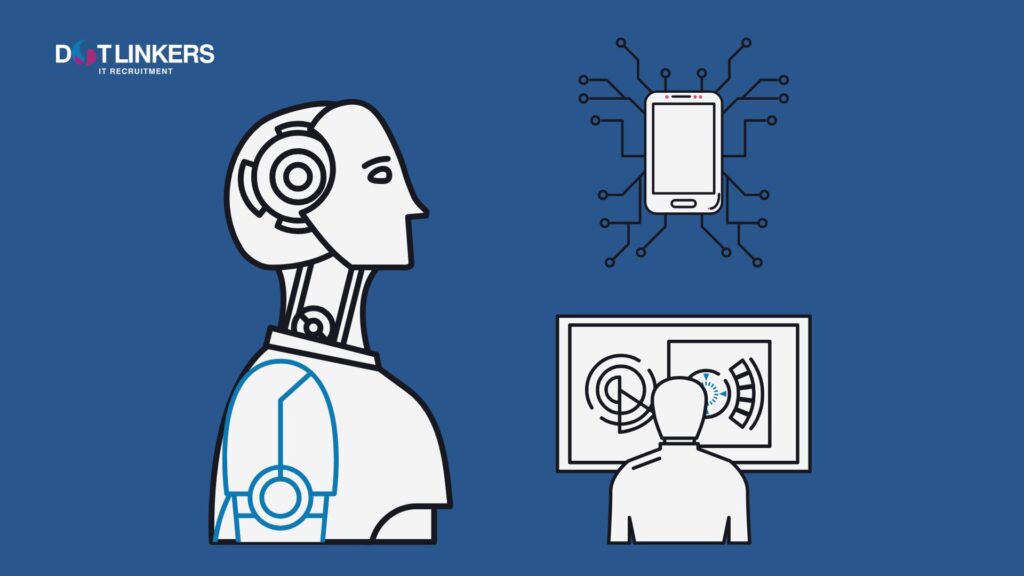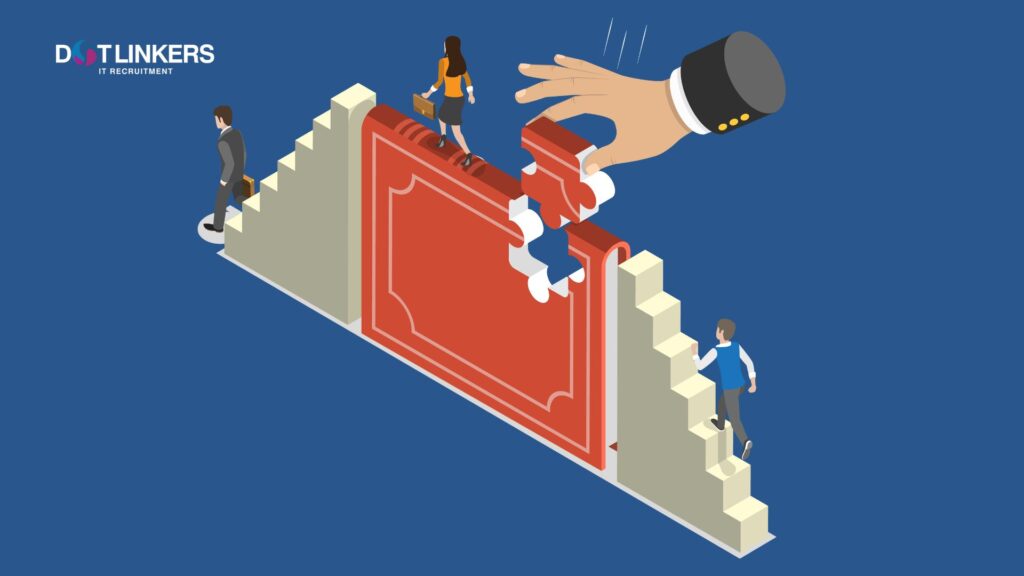Table of Contents
The Skill Gap – A Silent Crisis in Your Organization? It’s Time to Act
In an ideal world, every employee would know exactly how to perform their tasks, every customer would fully understand your product, and business partners would consistently bring in new, loyal clients. Unfortunately, reality is far from perfect. The skills gap—the mismatch between the skills employees have and those they need—has become one of the most pressing challenges facing modern organizations.
Technology Is Evolving Faster Than Skills
Technological advancement isn’t slowing down. According to the World Economic Forum, by 2025, half of the global workforce will need reskilling. At the same time, 87% of companies already experience or anticipate a shortage of critical skills. This gap affects not only work efficiency, but also stifles innovation, product development, and the overall competitiveness of businesses.

What Exactly Is the Skills Gap?
What is the skills gap? The skills gap is the discrepancy between the skills an employee (or candidate) currently possesses and those required for a given role or industry. It can take many forms—from a lack of specific technical expertise (e.g., programming in a new language) to insufficient knowledge of business processes, or deficits in soft skills such as communication, adaptability, or critical thinking.
Importantly, the skills gap isn’t just an individual issue. It is a systemic challenge that affects the efficiency of entire teams and organizations. It can slow innovation, prolong project timelines, and increase recruitment and training costs. On a macro scale, it hinders economic growth and complicates the implementation of new technologies.
Understanding what the skills gap is marks the first step in effectively identifying and addressing it—both at the individual and organizational level.
Where Does the Skills Gap Come From?
The skills gap stems not only from a lack of technical knowledge but also from deficits in soft skills and practical industry expertise. Skill gap examples & Key causes include:
- Technological progress, which creates demand for new skills faster than the labor market can adapt
- An aging workforce – Bain & Company estimates that by 2031, more than 25% of the workforce will be over 55
- Mismatch in education – around half of university graduates work in jobs that don’t require a degree
- Evolution of job roles – positions like ethical data analyst or AI environment designer didn’t exist a few years ago
According to the Association for Talent Development (2022), the top three missing competencies among employees are:
- Critical thinking and problem-solving
- Managerial and supervisory skills
- Communication and interpersonal skills
Other frequently missing skills according to skill gap analysis include teamwork, negotiation, and digital/technological competencies.

Who Lacks the Skills? Employees, Customers, and Partners
👩💼 Employees
As ATD reports, the most common skill gaps involve critical thinking, management, and interpersonal communication. Additional gaps increasingly include teamwork, negotiation, and digital capabilities. Lack of training causes frustration and disengagement—12% of employees believe they could contribute more if they had the right skills. Alarmingly, 10% of executives also admit to having skills gaps.
📱 Customers
Surprised? Customers need training too. They often have to “sell” a product internally within their organizations—which requires presentation, persuasion, and collaboration skills. Their limited technical knowledge can prevent them from fully utilizing a product. Our research shows that 23% of customers use only half of a product’s functionalities, contributing to churn. In fact, 20% of companies reported increased churn last year.
🤝 Partners
Business partners—resellers, affiliates, system integrators—often lack marketing, sales, technology, and communication skills. This leads to poor client education or lack of effective support, burdening customer service teams and negatively impacting sales performance.
How to Bridge the Skills Gap: Strategic and Effective Actions
Invest in Upskilling and Reskilling
Don’t just hire for skills—develop them internally. BCG reports that 68% of workers are open to reskilling if their current roles become obsolete.
Best practices:
- Align training programs with business goals
- Use multiple formats: e-learning, microlearning, workshops, job shadowing
- Emphasize practical learning: projects, case studies, simulations
Build a Learning Culture
Ad hoc training is not enough. You need a culture where learning is part of everyday work.
How to achieve it:
- Start with leadership – managers should lead by example and support team growth
- Enable access – make learning easy, flexible, and tech-supported
- Promote peer learning – foster knowledge sharing across teams
- Reward growth – recognize and appreciate learning efforts
Support Internal Talent Mobility
Moving employees across departments or projects helps:
- Share knowledge
- Develop new competencies
- Boost engagement and retention
Adopt a Skills-First Hiring Approach
Rather than relying solely on diplomas, evaluate practical skills. Skills-first hiring allows you to:
- Access a broader talent pool
- Build more diverse teams
- Better match candidates to business needs
Collaborate with Universities and Vocational Schools
Joint internship programs and aligned curricula help:
- Prepare future employees
- Ensure a steady pipeline of fresh talent
Leverage Learning Technology
With tools like LMS, LCMS, mobile apps, and microlearning platforms, organizations can:
- Create personalized learning paths
- Track progress and skills gaps
- Analyze trends and plan long-term strategies
According to Training Industry’s 2023 report, companies allocate an average of 16% of their training budgets to learning technology.
Measure and Optimize Learning Outcomes
What to focus on:
- Collect feedback from learners and managers
- Evaluate post-training performance
- Monitor key metrics: productivity, effectiveness, turnover
- Track long-term impact on skills development
Closing the Skills Gap: A Strategic Priority
The skills gap is not a temporary inconvenience—it is a systemic challenge that affects business competitiveness, innovation, and adaptability in an era of rapid technological change. As automation, shifting job roles, and rising employee expectations reshape the labor market, addressing the skills gap must be an immediate priority.
According to McKinsey and the World Economic Forum, up to 90% of companies already face skills shortages, and half the global workforce will require reskilling by 2025. Traditional recruitment and ad hoc training are no longer sufficient—a fundamental shift in talent management is required, grounded in a skills-based strategy.
Effective skills strategies require:
Mapping and analyzing skills gaps using competency frameworks, feedback, LMS data, and market benchmarks
Targeted skills development through upskilling, reskilling, and embedded learning
Fostering a continuous learning culture supported by leadership and learning technology
Enabling internal talent mobility to fully leverage workforce potential
Hiring based on skills rather than rigid credentials
Collaborating with education providers to align learning with market needs
Adopting hybrid workforce models that blend internal teams with external, flexible talent
Only companies that proactively and holistically address the skills challenge will not only keep up with change—they’ll help define it. Closing the gap is more than a defensive move—it’s a chance to build a resilient, future-ready organization driven by learning, innovation, and empowered talent.
If you are looking for recruitment services tailored to your needs, check out IT recruitment services in Poland.
